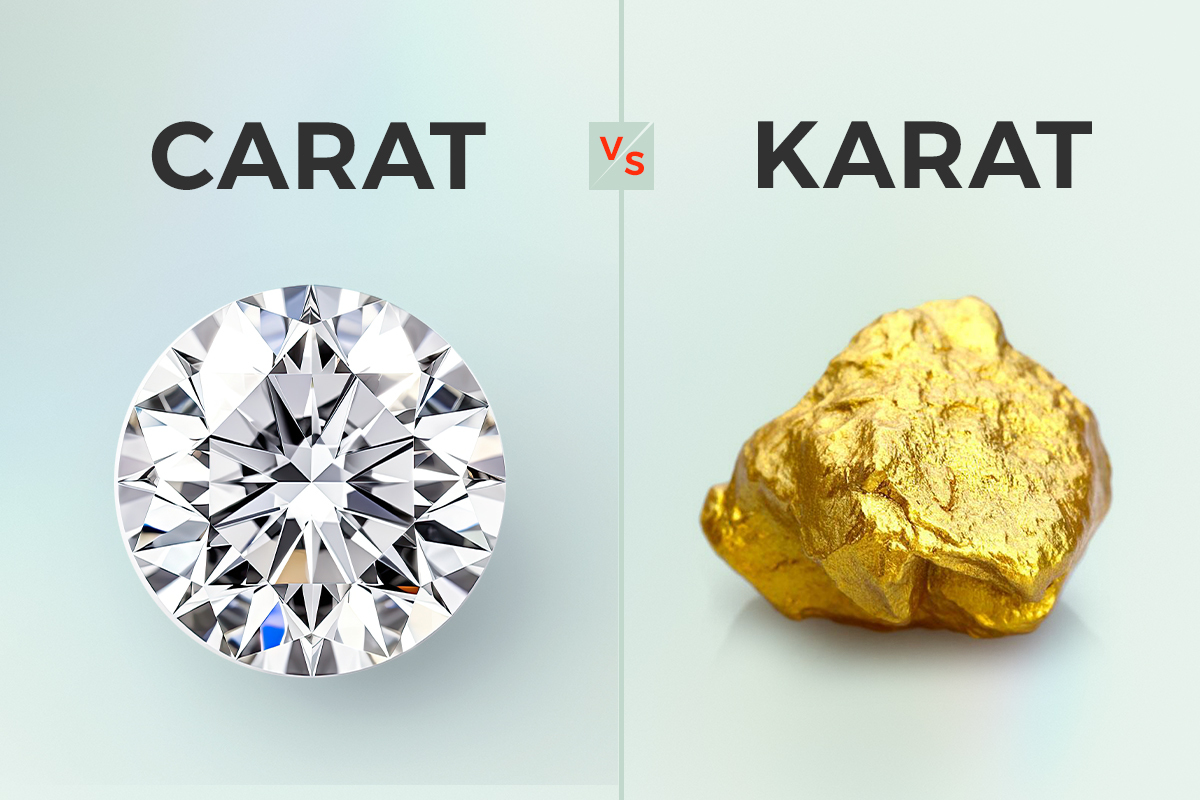Carat vs. Karat: Jewelry and Gold Differences
Are you confused between the terms carat vs karat? Do you often mix up these two terms while buying jewelry? Well, you’re not alone. The difference between these two can be confusing, and many people use these terms interchangeably. But fear not! In this blog post, we’ll explain the difference between carat vs karat, their historical backgrounds, and their significance in diamonds and gold.
We’ll also explore common misunderstandings around these two terms and provide practical tips to remember the difference. So, whether you’re a jewelry enthusiast or just curious about these terms, read on to clear your confusion once and for all!
Unraveling the Terms: Carat vs Karat
In both the UK and the USA, the terms “carat vs karat” are used to describe different aspects of precious materials, but they pertain to distinct elements within the realms of gemstones and precious metals.
When weighing diamonds, the term carats is used, but carats don’t tell you about gold purity. On the other hand, when it comes to gold in jewelry, karats are used to assess its purity. Vital in the jewelry industry, both terms are often confused due to their similar spelling. Jewelry enthusiasts must discern the disparity between carat vs karat for clarity. Understanding these distinct measurements is crucial for aficionados of precious stones and metals.
Defining Carat: The Unit of Weight
In the world of gemstones, a “carat” is the standard unit of weight of diamonds. It helps measure the mass of precious stones, with one carat equivalent to 200 milligrams or 0.2 grams. This precise measurement is crucial for evaluating the size and, consequently, the value of diamonds. Today, gemologists use advanced scales to ensure accurate and consistent measurements, making carat an essential factor in understanding a diamond’s weight and overall value.
Tracing its origins to the carob bean pod, the carat is a standard unit of measure for diamond weight globally. The term denotes the size, not the purity, of a diamond, playing a pivotal role in determining its value. Carat weight is essential in the assessment of precious stones and jewelry.
Understanding Karat: The Measure of Purity
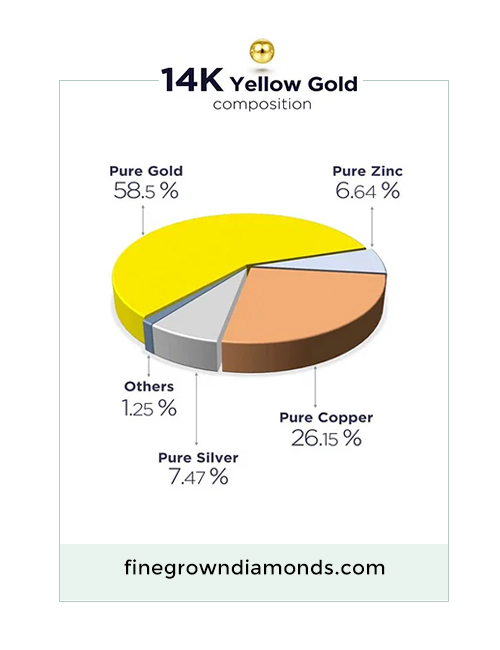
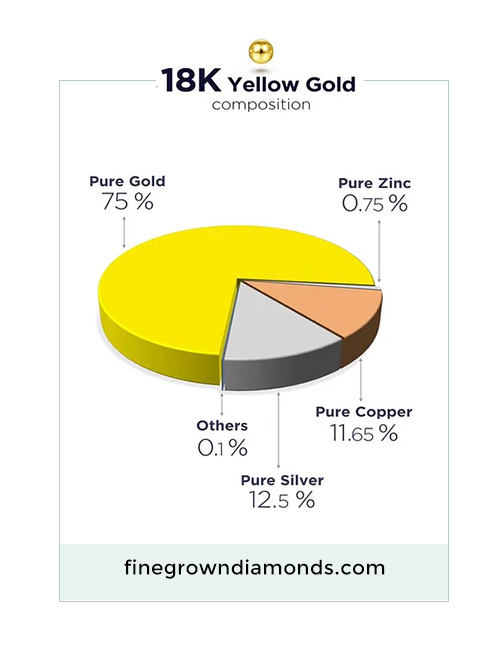
In the realm of precious metals, “karat” serves as a measure of purity. Specifically applied to gold, karat indicates the proportion of pure gold in a piece of jewelry. The karat scale ranges from 24k (indicating pure gold) to lower values like 18k, 14k, or 10k, where gold is alloyed with other metals for added strength and durability.
Gold Karat holds global significance in the industry. Karat yellow, white, and rose gold variations have unique karat values. Knowing the karat of gold is crucial when choosing jewelry, as it directly affects its color, hardness, and overall composition. The higher the gold karat, the softer and richer the gold, offering consumers insights into the quality and characteristics of their chosen piece.
The Historical Background of Carat Vs Karat
The historical background of the carat vs karat dates back to ancient times, with the carat originating from the ancient Greeks and being linked to the carob bean pod. On the other hand, karat finds its genesis in the ancient practice of testing gold purity. The historical evolution of these terms has significantly influenced the jewelry and diamond industry.
The Origins of Carat
The concept of diamond weight can be traced back to ancient Greek usage of carob bean pods as a form of weight measurement. These pods eventually transitioned into what is now known as the standardized weight measure, a “carat.” The historical significance of carat weight has remained pivotal within the diamond industry, influencing the way we perceive and value precious stones.
The Origins of Karat
The term “karat” finds its roots in the ancient Greek word “keration,” denoting the carob bean pod used as a measure of gold purity. This practice evolved into the karat system, symbolizing the durability and brilliance of gold. The historical significance of the karat system continues to influence the assessment of precious metals’ purity and the crafting of exquisite jewelry.
The Significance of Carats in Diamonds
In the enchanting world of diamonds, the term “carat” holds immense significance, playing a key role in determining a diamond’s value, rarity, and visual impact. Larger diamonds, measured in higher carats, are generally more sought after and command higher market value due to their relative scarcity. When you are buying diamond jewelry that has larger carat diamonds, it will cost you more as compared with smaller diamond carats due to their rarity and perceived value.
In recent years, an alternative to natural diamonds has gained popularity: lab-grown diamonds. These diamonds are created in a controlled environment using advanced technological processes. When it comes to the price of larger-carat diamonds, lab-grown diamonds often offer a more affordable option than their natural counterparts.
So, whether buying lab grown diamonds online or natural diamonds understanding the significance of carat weight is essential for individuals looking to purchase diamonds, as it ensures that they acquire the desired size and quality of the precious stones without compromising.
How is Carat Weight Determined in Diamonds?
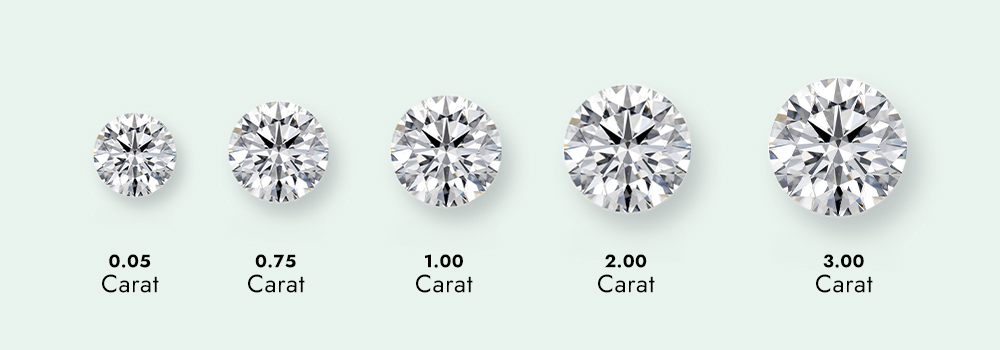
The carat weight in diamonds is determined using precise weighing scales, typically to the nearest hundredth of a carat. Carat weight is primarily determined by measuring the diamond’s dimensions. The key dimensions considered are the diameter, depth, and sometimes the girdle thickness.
Exploring the Role of Karats in Golde
Karat gold, varying from 10K to 24K, plays an important role in fine jewelry and engagement rings. The purity of gold jewelry, be it 18K or 14K, directly impacts its durability, color, and value. Familiarizing oneself with the differing karat values of gold jewelry is crucial for making well informed purchasing decisions. Understanding this allows individuals to determine the quality and value of their jewelry pieces before making a purchase.
How Many Karats Make Pure Gold?
Pure gold is measured in karats, and 24 karats represent the highest level of purity. Therefore, pure gold is often referred to as 24-karat gold. In a 24-karat gold item, 100% of the metal is gold, with no other metals alloyed with it. As the karat value decreases, it indicates a lower proportion of gold in the alloy. For example, 18-karat gold contains 75% gold, 14-karat gold has approximately 58% gold, and 10-karat gold consists of 41.7% gold.
The Misunderstandings Around Carat vs Karat
The distinction between carat vs karat is crucial in the jewelry industry. Carat measures gemstone weight, especially for diamonds, while karat denotes gold purity. Consumers frequently confuse these terms due to their similar sound and association with valuable materials. Understanding this disparity is essential when purchasing jewelry to make informed decisions. For diamond buying, consider carat alongside cut, clarity, and color. Conversely, focus on the karat value for gold purchases, ensuring the desired purity level.
Common Misconceptions About Carat and Karat
When considering gemstones, it’s crucial to differentiate carat weight from the purity of gold measured in karat. While carat weight determines a gemstone’s size, its value is also influenced by cut, clarity, and color. Karat measures the purity of gold, with 24k being pure gold and lower numbers indicating a mix with other metals. Confusing the two can lead to financial loss, making it essential to seek expert advice before significant purchases.
Why People Often Confuse Carat With Karat?
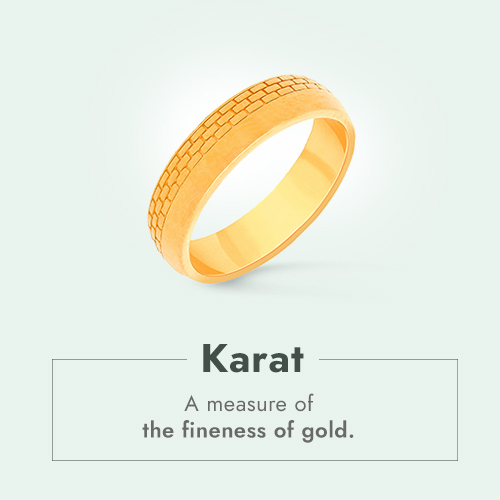
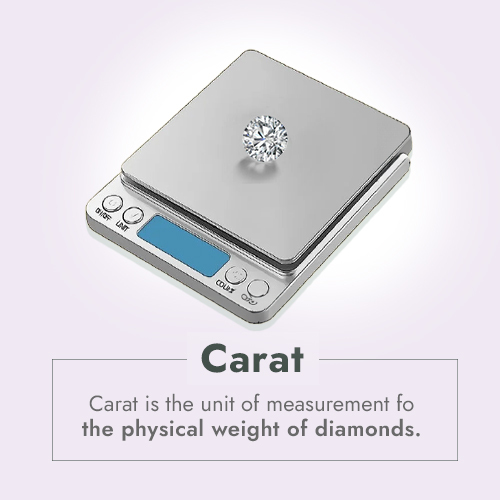
Carat and karat are commonly confused because of their similar spellings and pronunciations. While carat refers to the weight of diamonds, karat is used to measure gold purity. The interchangeability of these terms in casual conversations leads to confusion, making it essential to understand their distinct meanings when buying precious metals or diamonds.
Conclusion
To sum it up, the terms “carat vs karat” have distinct meanings and usage. Carat is used to measure the weight of gemstones, particularly diamonds, while karat is used to measure the purity of gold. Understanding the difference between these two terms is crucial to avoid any confusion or misinterpretation. Remember that carat refers to weight and is relevant in the context of gemstones, whereas karat refers to purity and is relevant in the context of gold. By keeping these distinctions in mind, you can confidently discuss and appreciate the value and quality of both gemstones and gold.

